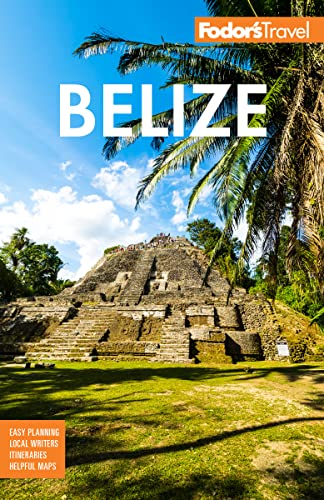A Mayan Primer
Chronology
Traditionally, archaeologists have divided Mayan history into three main periods: Pre-Classic, Classic, and Post-Classic. Although some academics question the validity of such a uniform chronology, the traditional labels are still in use.
The Pre-Classic (circa 3,000 BC–AD 250) period is characterized by the influence of the Olmec, a civilization centered on the Gulf Coast of present-day Mexico. During this period cities began to grow, especially in the southern highlands of Guatemala and in Belize, and it's at this time that Belize's Cuello, Lamanai, Santa Rita, Cahal Pech, Pacbitun, and Altun Ha sites were first settled, along with El Mirador in Guatemala.
By the Late Pre-Classic (circa 300 BC–AD 250) period the Maya had developed an advanced mathematical system, an impressively precise calendar, and one of the world's five original writing systems. In Belize, Cerros (also called Cerro Maya) was established during the Late Pre-Classic period.
During the Classic (circa AD 250–900) period, Mayan artistic, intellectual, and architectural achievements literally reached for the stars. Vast city-states were crisscrossed by a large number of paved roadways, some of which still exist today. The great cities of Caracol (Belize), Palenque (Mexico), Tikal (Guatemala), and Quirigu (Guatemala) were just a few of the powerful centers that controlled the Classic Mayan world. In AD 562 Caracol—which at its height was the largest city-state in Belize, with a population of about 150,000—conquered Tikal. Other notable Classic period sites in Belize include Xunantunich, El Pilar, and Lubaantun.
The single largest unsolved mystery about the Maya is their rapid decline during the Terminal Classic (AD 800–900) period and the centuries following. Scholars have postulated that climate change, pandemic disease, extended drought, deforestation, stresses in the social structure, overpopulation, and changes in the trade routes could have been responsible. Rather than a single factor, several events taking place over time could well have been the cause.
The Maya of the Post-Classic (AD 900–early 1500s) period were heavily affected by growing powers in central Mexico. Architecture, ceramics, and carvings from this period show considerable outside influence. Although still dramatic, Post-Classic cities such as Chichén Itzá and Uxmal pale in comparison to their Classic predecessors. By the time the Spanish conquest reached the Yucatán, the Maya were scattered, feuding, and easy to conquer. Several sites in Belize, including Lamanai, were continuously occupied during this time, and even later.
Key Dates
Here are some key dates in the history of the Maya in Belize and in the El Petén area of Guatemala. Most of the dates are approximate, and some dates are disputed.
BC
3114 Date of the creation of the world, or 0.0.0.0.0 according to the Long Count calendar
3000 Early Olmec and Mayan civilizations thought to have begun
2500 Cuello established
2000 Santa Rita established
1500 Lamanai established
1000 Cahal Pech established
900 Olmec writing system developed; Caracol established
800 Tikal established
500 First Mayan calendars carved in stone
400–300 First written Mayan language
250 Altun Ha established
200 First monumental buildings erected at Tikal and El Mirador
AD
400–600 Tikal becomes leading city-state, with population of perhaps 200,000
553 Accession of Lord Water as Caracol ruler
562 Caracol conquers Tikal
599 Accession of Lord Smoke Ahau as Caracol ruler
618 Accession of Kan II as Caracol ruler
631 Caracol defeats Naranjo; Caracol's population is 150,000
700 Lubaantun established
800 Cahal Pech abandoned
895 Xunantunich abandoned
899 Tikal abandoned
900 Classic period of Mayan history ends
900–1500 Mayan civilization in decline, many cities abandoned
1000 Southern Belize Mayan centers mostly abandoned
1050 Caracol abandoned
1517 Spanish arrive in Yucatán and begin conquest of Maya
1517–1625 Diseases introduced from Europe cause death of majority of Maya
1524–25 Hernán Cortés passes through Belize en route to Honduras, after leading expeditions to conquer the Aztecs in Mexico
1546–1600s Maya in Belize rebel against Spanish
1695 Tikal ruins rediscovered by Spanish
1700s Lamanai continuously occupied over 3,000 years
1724 Spanish abolish encomienda system of forced Mayan labor
1839 John Lloyd Stephens and Frederick Catherwood visit Belize
1847 Caste Wars in Yucatán begin
1881 Early archaeological work begins at Tikal, by Alfred Maudslay
1894 Thomas Gann begins exploring Xunantunich and other Belize ruins
1926 Ruins of El Mirador, one of the earliest and largest Mayan cities, found in remote area of the Petén
1936 Caracol ruins rediscovered by a lumberman
1956 William Coe and others begin excavations at Tikal
1985 Drs. Arlen and Diane Chase begin excavations at Caracol, which continue to this day
1992 Rigoberta Menchu, a Maya from Guatemala, wins Nobel Peace Prize
2012 The time some predicted would be the end of the world, December 21, 2012, or 13.0.0.0.0 in the Long Count Mayan calendar passed as just another day
2013 The looting and export of Mesoamerican Mayan artifacts for illegal sale to collectors becomes an estimated $100-million-a-year business




